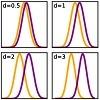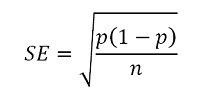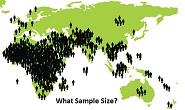The concept of designing studies is inextricably linked to the effectiveness of a statistical analysis which is implemented to test a particular null hypothesis of interest. It is the design of a study which is responsible for setting the format of a statistical analysis in terms of what tests will be conducted, what characteristics will be measured and so on. It has even been stated among the literature that in many ways the design of a study is more important than the statistical analysis itself1.
If a study is poorly designed, then the significance of the statistical analysis which follows will be negligible. When designing a study it is critical to consider various factors such as the controls which are to be maintained, the duration of the study, the sample size to evaluate and the surveying methodology, to name a few things. For example, a study designed with too many controlled variables will not be useful because in the natural world, there are many variables which change due to chance alone and thus, cannot be controlled for.
Within the academic literature, it is agreed that the design of a study or experiment is the backbone to good research2. The methodology portion of a scientific study, although it may be one of the more technical sections of a paper, is by no means the least important. It is the methodology of a study which allows data to be collected and analyzed appropriately.
When designing a study, factors such as the statistical power and sample size determination, are just a few of the quantifiable characteristics which need to be considered. Research is costly, not only in terms of resources, but also with respect to time, and therefore, designing appropriate and organized studies is the key to success.
References:
1. BMJ Publishing Group Ltd. (2014). Study design and choosing a statistical test. Retrieved from http://www.bmj.com/about-bmj/resources-readers/publications/statistics-square-one/13-study-design-and-choosing-statisti
2.Knight, K.L. (2010). Study/Experimental/Research Design: Much More Than Statistics. Journal of Athletic Training, 45(1), 98-100. doi: 10.4085/1062-6050-45.1.98
© BrainMass Inc. brainmass.com June 30, 2024, 9:26 am ad1c9bdddf



